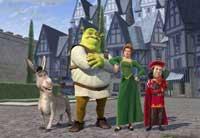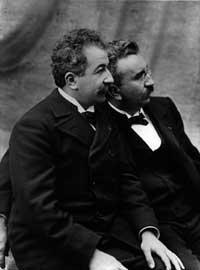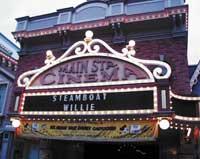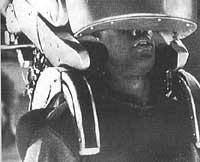Oscar Awards for Science and Imaging Technology
2002/03/24 Mendiburu, Joana - Elhuyar Zientziaren Komunikazioa

Behind prestigious actors, directors and producers there are many workers and companies that improve tools and develop new techniques. Digitization is one of the new techniques that today goes from word to mouth, but the cinema is composed of cameras, lights, sounds, etc. Every year in all these areas new steps have been taken to reach the cinema we know today.
The Oscars of Science and Imaging Technology aim to reward these advances. The award ceremony takes into account the usefulness of new techniques, their effectiveness and their economic dimension. Therefore, award-winning techniques must meet two requirements. On the one hand, as is normal, it must be a method, a formula or a concrete invention related to the art and science of the image. In addition, it should be a technique or material premiered the same year of the award.
Awards by categories
The Imaging and Science Technique awards are as old as other well-known Oscars. The Oscars were first distributed in 1929 and these other three years later, in 1931. They are distributed in different areas, so in the commission that decides to whom the prize is awarded participate about 40 experts from different departments. Its director is the president of the academy.

Films, optics, projection, light, sound and digital image are some of these series. The prizes are awarded to advances with all the merit, so it is possible that in a year several prizes are awarded from the same area or in some areas no prize is granted (no annual inventions are made that deserve the prize). Last year, for example, four sound-related awards were distributed.
To prepare for the awards ceremony, the Academy asks every year people working around film and companies to send information about the new techniques used. Subsequently, this information is transferred to the members of the commission and in mid-September the first meetings begin to decide who the prizes are awarded.
This year's award has been discussed

This year's awards were given on the night of March 2 at a dinner event. In total, 21 awards have been presented, one of the most common in the awards ceremony, and one of them by the technique designed and developed by Peter Kuran for the recovery of color images of old films. Kuran has not lived the colors but the contrasts. In obsolete color images shadows and dark azulean and yellowish spots of light. Therefore, the colors are mixed and it should not be said that with the loss of colors the image quality decreases a lot.
Thanks to Kuran's technique, blue and yellow are revealed and clarified respectively. This illuminates the film below and copies the image into a black and white film. In this way, the dark moments appear in black and the clear parts in white. The two films are then superimposed and the contrast becomes evident. To some extent it can be said that Kuran's technique is like putting on the original color drawing a black and white wallpaper.
But this award ceremony, like that of other Oscars, has generated confusion and criticism. According to some experts, Kuran's technique is nothing new. Apart from some details, this is a technique used in the last 10-15 years. Cineric has announced that his technique is very similar.

These statements are giving rise to a long chain of reactions that, as reported by the company Cinetech, in which Kuran works, do not serve to repair any film. They say that only films that have been treated prior to their deterioration can be recovered with previous photochemical techniques. It is therefore imperative to be aware of the risk of prior deterioration and take appropriate action. Of course, with all the old films this forecast has not been made.
However, this technique is not the only way to recover old movies. In fact, today they also recover digitally. For this, the original negative is scanned and, subsequently, by computer, red, green and blue are treated one by one. The result is very good, but it is very expensive to treat old movies this way. In fact, this technique has recovered the film of Hitchcock Vertigo, whose cost has been one million dollars.
Kuran's technique is 25% cheaper and also gets faster, although the result is not so perfect. And who knows if it's as new as it says!
Published in 7K.

Gai honi buruzko eduki gehiago
Elhuyarrek garatutako teknologia





